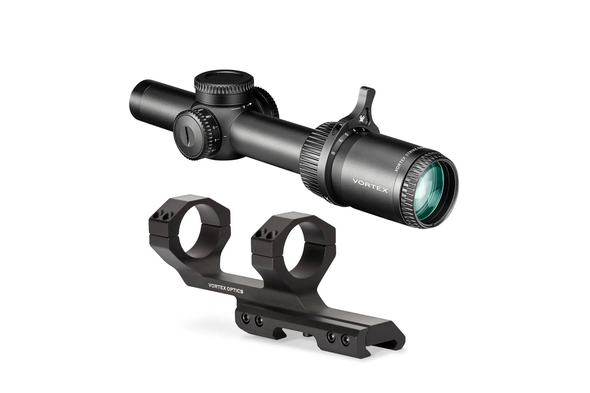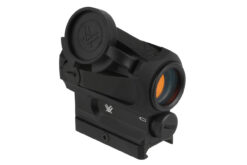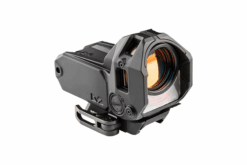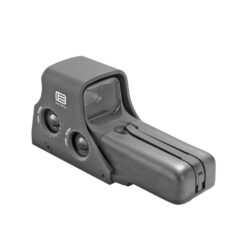AR-15 Optics
The Best AR-15 Optics for Night Shooting and Low-Light Conditions
Table of Contents
Understanding the Challenges of Low-Light Shooting
Night shooting and low-light environments present unique challenges for AR-15 owners. Reduced visibility can make it harder to acquire targets, maintain accuracy, and safely identify your surroundings. Without the right optics, even experienced shooters can struggle in these conditions. Modern AR-15 optics are specifically engineered to address these challenges, offering features like illuminated reticles, high-quality lens coatings, and variable brightness settings. Many also incorporate rugged, weather-resistant construction to ensure reliability in demanding field conditions. The right setup ensures you can make quick, accurate shots while maintaining situational awareness and minimizing eye strain. Whether you’re hunting at dawn, training in low-light ranges, or preparing for tactical applications, understanding the demands of these scenarios is the first step toward choosing the best gear.
Red Dot Sights for Fast Target Acquisition
AR-15 red dot sights are among the most popular options for low-light shooting because of their simplicity and speed. A quality red dot provides a clear aiming point that is easy to see, even in near-dark conditions. These sights typically have adjustable brightness levels, allowing you to fine-tune the reticle for ambient lighting and prevent washout. Since they are parallax-free at a given distance, you can keep both eyes open, improving situational awareness and speed when transitioning between targets. Paired with a magnifier, a red dot sight can extend your effective range while still being optimal for close-quarters engagement. When combined with a weapon-mounted light, they offer a reliable solution for identifying and engaging targets quickly, even in fast-changing environments. Many modern models are also rugged, waterproof, and designed to withstand heavy recoil, making them a dependable choice for defensive, hunting, and tactical applications.
Low-Power Variable Optics (LPVO) for Versatility
Low-Power Variable Optics, or LPVOs, bridge the gap between close-range speed and mid-range precision. For AR-15 owners who want an all-in-one solution, LPVOs offer adjustable magnification—often starting at 1x for rapid, red dot-like aiming and extending to 6x, 8x, or even 10x for longer shots. Many LPVOs feature illuminated reticles designed for low-light environments, giving you flexibility when shooting at dusk or dawn. High-quality lens coatings enhance light transmission, ensuring your sight picture remains bright and clear even in challenging lighting. The robust construction of most LPVOs also ensures they can handle recoil, impacts, and varying weather conditions without losing zero. An LPVO’s versatility makes it a top choice for competition shooters, hunters, and tactical users who need to adapt to different ranges and lighting conditions quickly, without switching optics or compromising performance.
Night Vision and Thermal Optics
For serious low-light and night shooting, night vision and thermal AR-15 optics offer unmatched capability. Night vision optics amplify existing light, allowing you to see clearly in near-total darkness, while thermal imaging detects heat signatures from people, animals, or other objects. These systems are more expensive but invaluable for specific applications, such as nighttime hunting, property defense, or security patrols. Some modern setups allow you to mount a night vision or thermal device in front of your existing AR-15 sight, combining the benefits of both technologies without removing your primary optic. Advanced models often include multiple reticle options, video recording, and wireless connectivity for added functionality. While these options are more specialized, they provide capabilities no traditional optic can match in complete darkness or visually obstructive conditions like smoke or fog.
Choosing the Right Reticle and Illumination
The reticle type and illumination system are critical factors in low-light performance. Simple dot reticles work well for rapid engagement, while BDC (bullet drop compensator) or MIL/MOA reticles aid in precision shooting at varying ranges. In low-light scenarios, an illuminated reticle is essential, but it should have adjustable brightness to avoid washout or blooming that can obscure your view. Green illumination can be easier for some shooters to see in certain conditions compared to red, particularly in environments with heavy vegetation. Additionally, optics with etched reticles ensure you still have an aiming reference if your illumination fails or the battery dies. For the best results, consider reticle thickness, visibility against different backgrounds, and how quickly you can acquire your target. Selecting the right reticle will depend on your intended use, range, and personal preference, as well as the lighting environments you most often encounter.
Maintaining Your AR-15 Optics for Optimal Performance
Even the best AR-15 sights and optics won’t perform well if they’re not properly maintained. In low-light conditions, any smudge, dust, or water droplet can distort your sight picture and reduce clarity. Regularly clean your lenses with appropriate tools, such as a microfiber cloth or lens brush, and store your optics in a protective case when not in use. Check your illumination batteries often—especially before a night shoot—to avoid unexpected failures, and keep a spare set on hand. Additionally, confirm that your optic’s mount is secure, as recoil, temperature changes, and rough handling can cause subtle shifts in zero over time. Periodic function checks and range confirmations ensure your optic remains dialed in. A well-maintained optic not only ensures consistent performance but also extends its service life, giving you confidence when it matters most.
FAQs About AR-15 Optics for Night Shooting
If you’re new to low-light shooting or just upgrading your setup, it’s normal to have questions about choosing and using AR-15 optics. Below, we’ve answered some of the most common questions to help you make an informed decision and get the best performance in dark or challenging lighting conditions.
What is the best AR-15 optic for low-light conditions?
For most shooters, a high-quality LPVO or an AR-15 red dot sight with adjustable illumination provides the best balance of speed and accuracy in low-light situations. These optics offer clear visibility, fast target acquisition, and the versatility to adapt to changing light conditions.
Do I need night vision for shooting at dusk?
Not always. Many quality optics with bright, adjustable reticles and good lens coatings perform well in low-light conditions. Night vision becomes more necessary when shooting in near-total darkness, where there’s little or no ambient light.
Can I use a magnifier with a red dot for night shooting?
Yes. A magnifier paired with a red dot extends your engagement range while retaining fast target acquisition. Make sure your magnifier and red dot both have clear glass and proper illumination for optimal low-light performance.
Are green reticles better than red in low light?
It depends on your eyesight and environment. Some shooters find green easier to detect in dim light, while others prefer red for its contrast. The best choice is often determined through personal testing in actual low-light conditions.
How important is lens coating for night shooting?
Extremely important. High-quality coatings improve light transmission, reduce glare, and enhance contrast, making it easier to see your target in dim conditions. Without good coatings, your sight picture may appear darker or washed out.
Will thermal optics work in complete darkness?
Yes. Thermal optics detect heat signatures instead of relying on light, so they work regardless of lighting conditions. They’re ideal for spotting living targets in total darkness or through light fog and smoke.
How often should I check my optic’s batteries?
You should check them before every trip to the range or field. Illumination is crucial in low-light, and a dead battery can leave you without a visible reticle when you need it most.
Can AR-15 sights hold zero after rough handling?
Quality AR-15 optics with strong mounts usually hold zero well, even after recoil or bumps. However, it’s a good habit to confirm zero after significant impacts or rough field use to ensure consistent accuracy.
Conclusion: Equip Your AR-15 for Low-Light Success
Choosing the right AR-15 optics for night shooting and low-light conditions can dramatically improve your accuracy, speed, and confidence in challenging environments. From fast-acquiring AR-15 red dots to versatile LPVOs and advanced night vision systems, the right choice depends on your shooting style, intended range, and specific needs. Investing in quality optics means you’ll benefit from clear sight pictures, dependable performance, and features designed to excel when visibility is limited. Maintain your gear, practice regularly, and you’ll be ready for any lighting condition—whether it’s dusk in the field or darkness on the range.
Shop top-rated AR-15 optics today at Black Rifle Depot and equip yourself with the tools you need for your next low-light adventure.
For additional resources, visit AR15BuildersForum.






